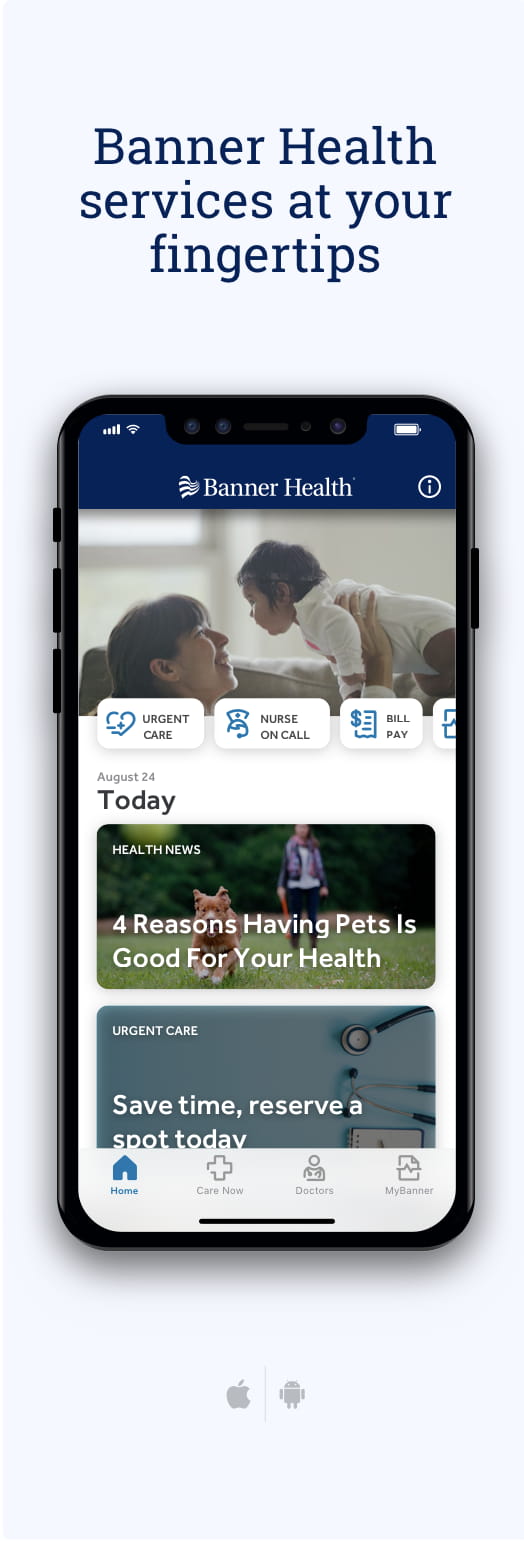“Where are my readers…?” Four words you never thought you’d say. Year by year, you may have noticed that your eyesight has changed. You may be holding food labels a little further from your face than you did in your twenties. Walking through dark hallways may feel a little more perilous than before. You aren’t the only one. You rely on your eyes every day and today’s tech-heavy lifestyle is enough to make any pair tired. Staying proactive to protect your eyes is the best way to nip any developing issue in the bud.
We spoke with Jillian Colson, MD, an ophthalmologist with Banner Health in Tucson, AZ to discuss the most common minor and major issues to look out for regarding your eye health.
Common eye issues
“The most common eye problem is a refractive error,” said Dr. Colson. In general, these issues are correctable with glasses, contact lenses, and sometimes refractive eye surgery. Common issues are:
- Near-sightedness: a vision condition in which close objects appear clearly, but far ones don't
- Far-sightedness: a vision condition in which nearby objects are blurry
- Astigmatism: a common imperfection in the eye's curvature that can make far-away and nearly objects look blurry or distorted
- Presbyopia: a gradual, age-related loss of the eyes' ability to focus actively on nearby objects.
Disease and eye disorders
Have you scheduled your next eye exam? Dr. Colson recommended adults, even with no symptoms or risk factors, schedule a screening when they hit 40. Around age 60, your likelihood increases for more serious eye diseases and disorders. Many of these issues can be spotted ahead of time, which emphasizes the importance of these regular visits.
Cataracts
Dr. Colson explained that “the most common cause of visual impairment that cannot be corrected with glasses is cataracts. Cataracts are usually an age-related change but can also be associated with certain diseases and medications. Visual impairment caused by cataracts is correctable with cataract surgery.”
Age-related macular degeneration
Age-related macular degeneration (AMD) is the leading cause of irreversible vision impairment among people over 65. It affects your central vision, making things like driving and reading difficult. But with early detection, it is possible to monitor for, and lower the risk of, developing a more severe and blinding disease. While some risk factors such as race, family history, and age are out of your control, there are ways that you can minimize your risk. Smoking, obesity, and high blood pressure all increase your likelihood to develop AMD and should be avoided.
Your ophthalmologist will look for AMD when dilating your eyes. If early signs are found, your treatment may include eye vitamins, diet changes, injections or laser treatment.
Diabetic retinopathy
Diabetic retinopathy is a major cause of blindness in adults younger than 65 years old. Because symptoms may not be noticed in the earlier stages, a complete dilated exam by an ophthalmologist for all patients with diabetes is recommended every year. Early detection, good control of blood sugar, blood pressure, and cholesterol are key to reducing risk of vision loss.
Glaucoma
Glaucoma is a group of diseases that can damage the optic nerve, causing permanent vision loss. It is typically associated with high eye pressures. Early detection is important, as the damage done is irreversible. By the time a person notices vision loss, there is usually significant damage to the nerve. Risk factors include people aged over 60, Black/African American or Hispanic/LatinX heritage, family history of glaucoma, history of direct eye trauma, and use of certain medications such as steroids. There are many tests that an ophthalmologist can perform in clinics to screen for and monitor the progression of glaucoma. Treatment may include glaucoma eye drops, laser, and surgery.
Protect your vision
Vision is among the most important factors in maintaining independence as you age. Protect your vision and your way of life by caring for your eyes and keeping vigilant with your regular eye exams. Detecting the issues listed above early is key. Schedule a visit with your ophthalmologist today.


